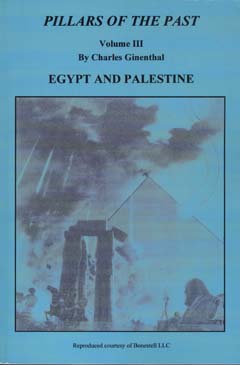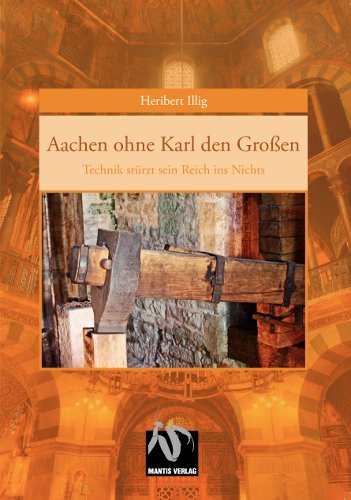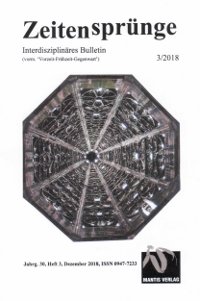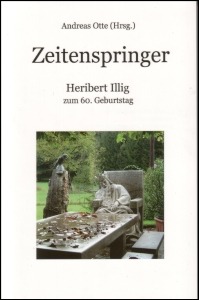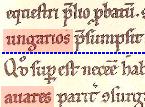Teil III der Buchreihe von Charles Ginenthal
Pillars of the Past
ist mit 624 Seiten Umfang neu erschienen.
Die drei Bände von Pillars of the Past kann man bestellen bei
Charles Ginenthal
65-35 108th Street
Forest Hills NY 11375
USA
gegen Vorauszahlung in Form von Bargeld (US Dollars) oder einem Scheck von einer amerikanischen Bank, evtl. funktionieren auch internationale Postanweisungen für den entsprechenden Betrag.
Der Preis ist einheitlich pro Buch, aber gestaffelt je nach Anzahl:
ein Exemplar 55 USD (inkl. Porto)
zwei Exemplare 50 USD pro Band, also 100 USD (inkl. Porto)
drei oder mehr Exemplare 40 USD pro Band, also mindestens 120 USD (inkl. Porto)
Das Buch (und seine Vorgänger) kann auch bei Mikamar Publishing bezogen werden. Statt mit Dollar-Scheck kann man hier auch per Kreditkarte oder Paypal bezahlen (25$ + 45$). Achtung: schwere Bücher wie dieses haben inzwischen bei Mikamar exorbitante Versandkosten. Da lohnen sich nur noch Sammel- oder Großbestellungen.
Inhalt:
Preface The Velikovsky Pillar
Part 1 Egypt
Chapter 1 Egyptian Prehistory, Chronology, Climate, and Catastrophism
Pole Shift
Catastrophe
The Afro-Asiatic Languages, Climate, and Chronology in Prehistory
Years of Darkness
Chapter 2 The Chronology of the Nubian/25th Dynasty
Chapter 3 Identity and Chronology of the Peoples of the Sea
Philology and Linguistics
Iron Weapons
Stratigraphy
Weapons, Armor, and Helmets of the Pereset and Sea Peoples
The Ships of the Sea Peoples
The Medinet Habu Temple and Chronology
The Sealand/Sea Country People and Chronology
The Second Sealand Dynasty and Chronology
Chapter 4 The Hyksos
Tin, Weapons, and Chariots
Stratigraphy
The Hyksos Language
The Akkadian, Assyrian, Hyskos Ancient Industrial Revolution
The Hyksos, domesticated Animals, and Chronology
The Cat and Assyrian/Hyksos Chronology
The Zebu and Hyksos/Akkadian/Assyrian Chronology
The Chicken and Hyksos Chronology
The Horse and Hyksos/Akkadian/Assyrian Chronology
The Horse, Catastrophism, and Chronology
Akkadians/Hyksos/Assyrians and Magan, Meluhha, Dilmun and Chronology
Chapter 5 The 12th Dynasty, Sothic Dating, Skeptics, Revisionists, and Evidence
David Rohl, Peter James, etal., and Astronomical Dating
Daphne Chappell’s Critique and Evidence
Chappell and the 12th and 18th Dynasties: Technology and Chronology
Addenda
Agronomy and the Chronology of the 12 Dynasty
Chapter 6 The First Intermediate Period. A Dark Age, and Chronology
The Hyksos Second Intermediate Period is the First Intermediate Period
Part 2 Palestine
Chapter 7 The Bible and Chronology
The Failure of Biblical Archaelogy
Biblical Archaeology ca. 1900-1970: The Rise of the Albright School
The Fall of the Albright School
Science, Technology, and Biblical Chronology
Philistines Dated to Persian Times
Biblical Dark Ages
Climate Change, the Pig, the Camel, and Chronology
Genetics and Biblical Chronology
Chapter 8 The Alphabet and Hebrew Chronology
The Ugarit Abeceday
The Domesticated Camel and Ugarit’s Chronology
Tin, Iron, and the Chronology of Ugarit
Ugarit Astronomy and Chronology
Archaeology and the Hebrew Alphabet
Transmission of the Alphabet to Greece
Chapter 9 A Tentative Biblical Chronology
Looking for David and Solomon
Hatshepsut, the Queen of Sheba, and the Location of Punt
Puntites: Africans of Semites?
The Fauna of Punt
The Flora of Punt
The Red Sea Route to Punt
The Camel and the Location of Pun
Incense Dark Ages of Egypt
Addenda
Chapter 10 The Eight Century Catastrophe, Floods, and Chronology
The Mesopotamian Flood
The Indus Flood
The Eighth Century B.C. Flood in China
Earthquakes, Floods, Climate, and Chronology
The Earthquake Evidence
The Hyksos Expulsion and the Exodus Catatrophe
Chapter 11 The Indo-European Language, Climate Change, and Chronology in Prehistory
Climate Change: Aridification Across Asia
Last Words
Bibliography
Index
